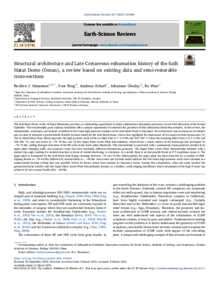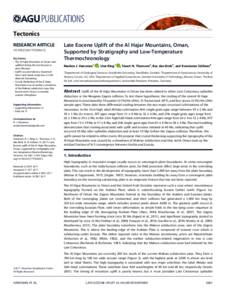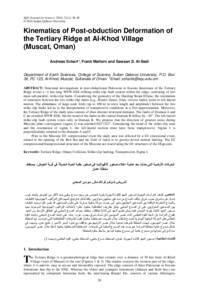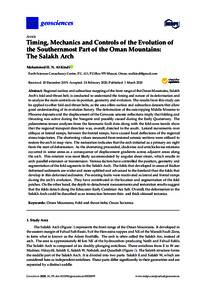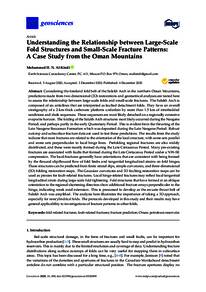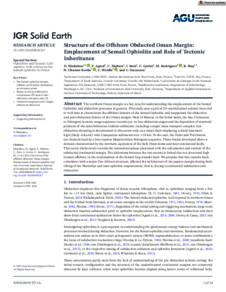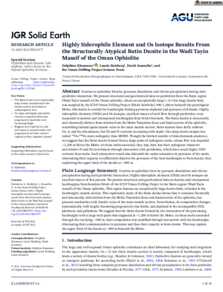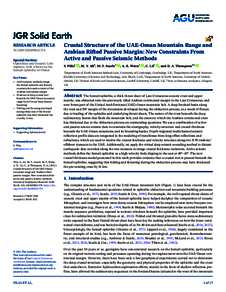Document
Structural architecture and Late Cretaceous exhumation history of the Saih Hatat Dome (Oman), a review based on existing data and semi-restorable cross-sections.
Identifier
DOI: 10.1016/j.earscirev.2021.103595
Source
Earth-Science Reviews. v. 217, 103595
Contributors
Country
Netherlands.
City
Amsterdam
Publisher
Elsevier B.V.
Gregorian
2021-06-01
Language
English
Subject
English abstract
The Saih Hatat Dome in the Al Hajar Mountains provides an outstanding opportunity to study subduction/exhumation processes coeval with obduction of the Semail Ophiolite. The exceptionally good outcrop conditions offer a unique opportunity to constrain the geometry of this subduction/obduction complex. In this review, the metamorphic, structural, and tectonic evolution of the Oman high-pressure complex in the Saih Hatat Dome is discussed. New structural cross-sections are developed and are used to interpret a geometrically feasible tectonic model for the Saih Hatat Dome. Our review highlights the importance of two major tectonic boundaries: (1) The As Sheik Shear Zone which separates the high pressure rocks of the As Sifah Unit (1.7–2.3 GPa and 510–550 °C) from the overlying Hulw Unit (1.0–1.2 GPa and 250–300 °C), and was active at ~79–76 Ma; and (2) the Upper Plate–Lower Plate Discontinuity, which forms a major surface in the landscape and developed by ~76–74 Ma, cutting through structures of the HP rocks in the lower plate (footwall). This discontinuity is associated with a pronounced strain gradient, notably in its upper plate (hanging wall), and separates rocks that have markedly different deformation geometry. The Upper Plate–Lower Plate Discontinuity initiated with a modest dip angle, making it a neutral structure in terms of crustal shortening vs extension. As a result, there is no discernable break in P-T conditions across it. The upper plate is dominated by the Saih Hatat Fold Nappe, forming between ~76 and 70 Ma. Subsequently, the upper plate has been dissected by a number of NNE-dipping thrusts at ~70–66 Ma, followed by normal faults at ~66 Ma. Our review and tectonic model indicate that the Oman high-pressure rocks were exhumed in a contractional tectonic setting that was possibly driven by forced return flow assisted by buoyancy forces. During this exhumation, when the rocks reached the greenschist-facies middle crust the Upper Plate–Lower Plate Discontinuity formed, as a shallow, south-dipping backthrust. Final exhumation of the high-P rocks was achieved by late normal faults after ~66 Ma.
ISSN
0012-8252
Category
Journal articles

